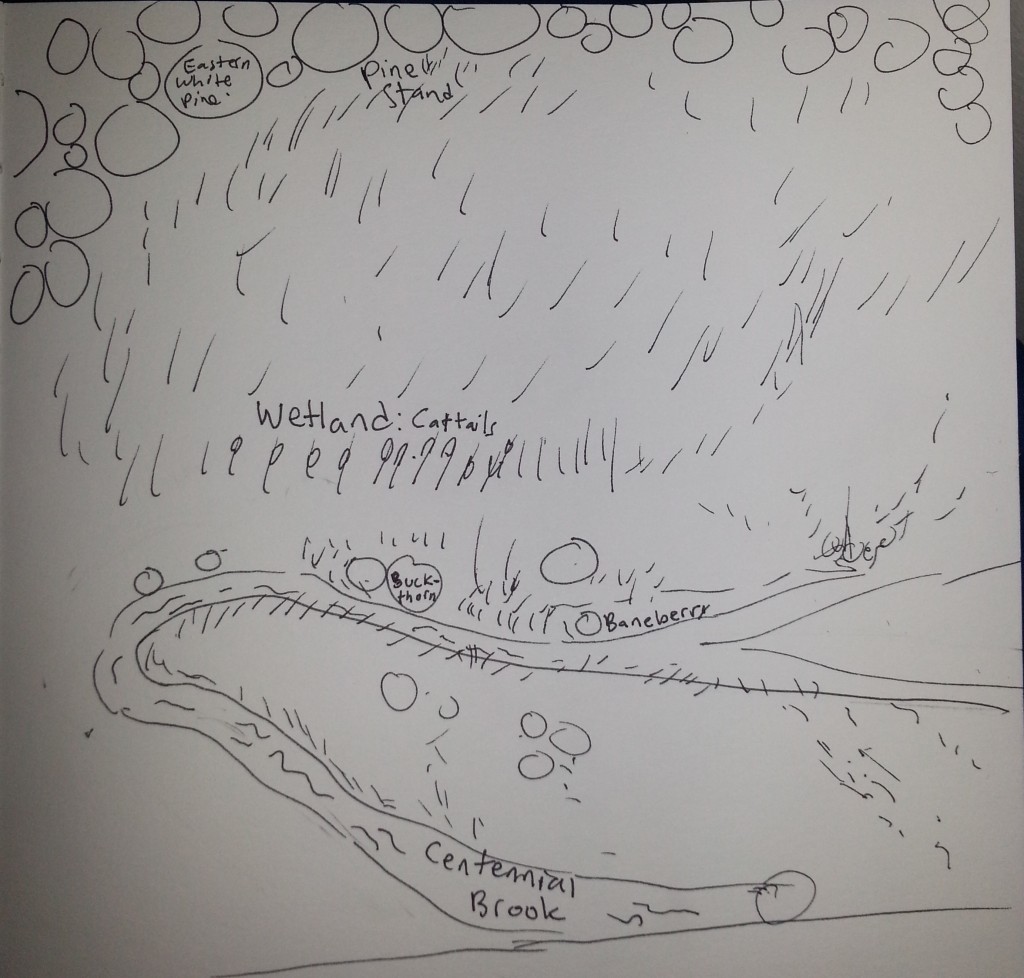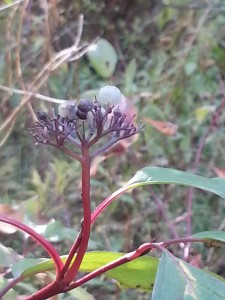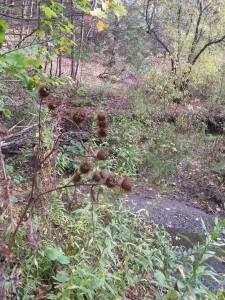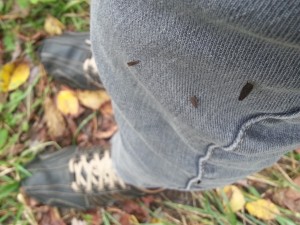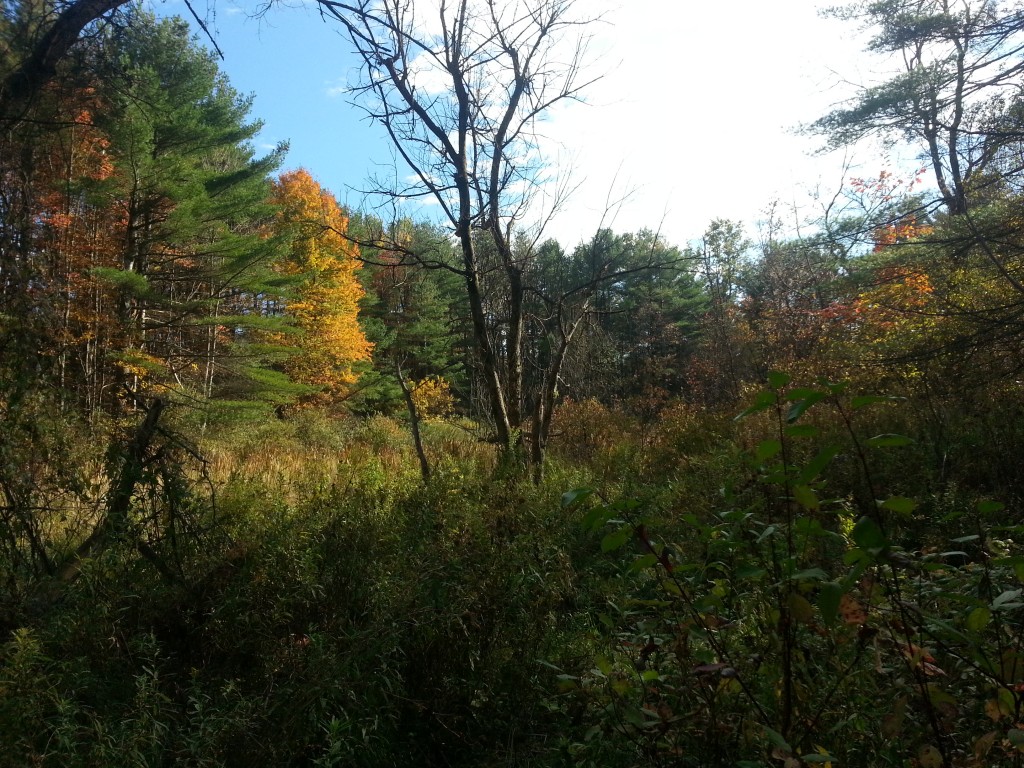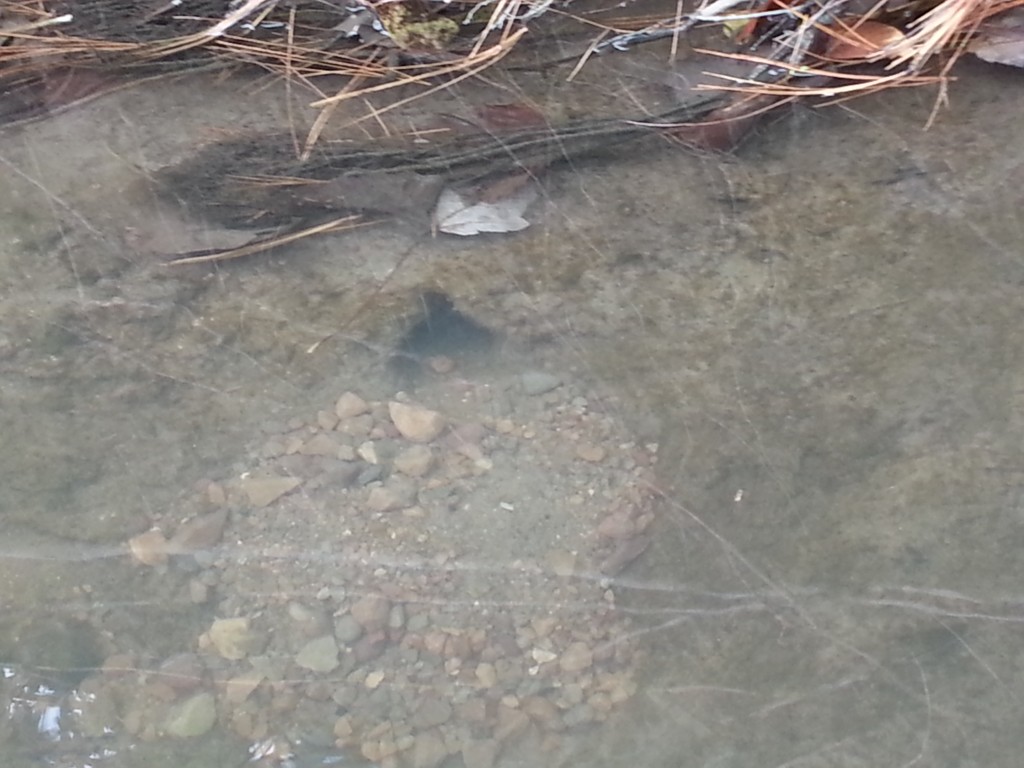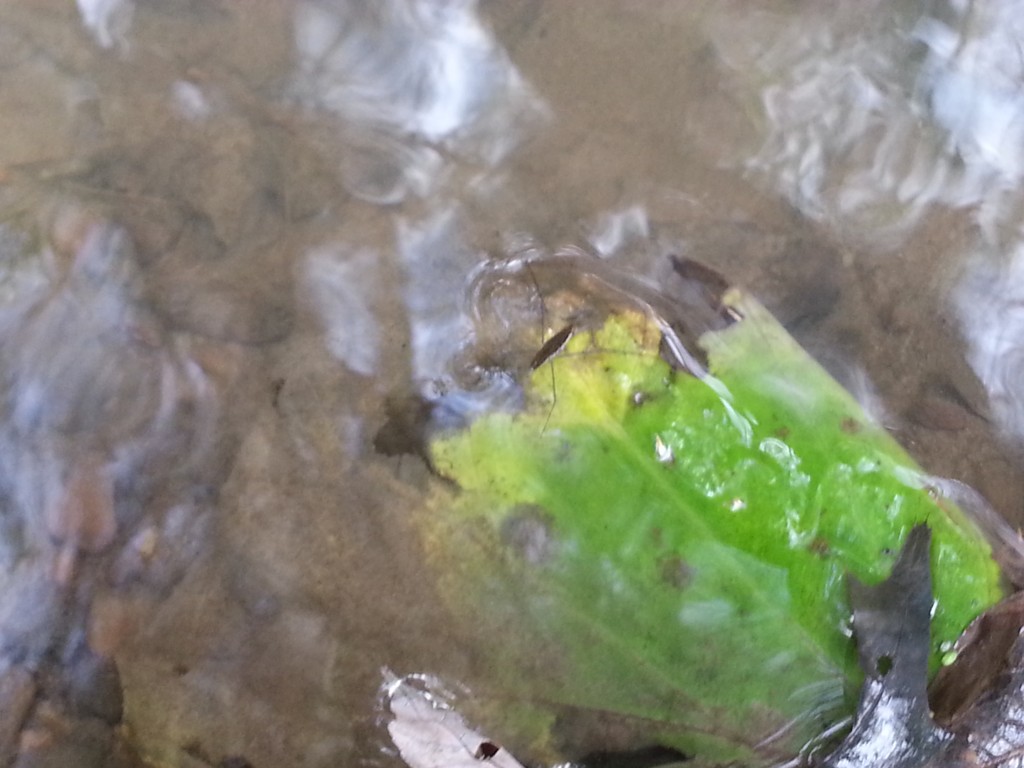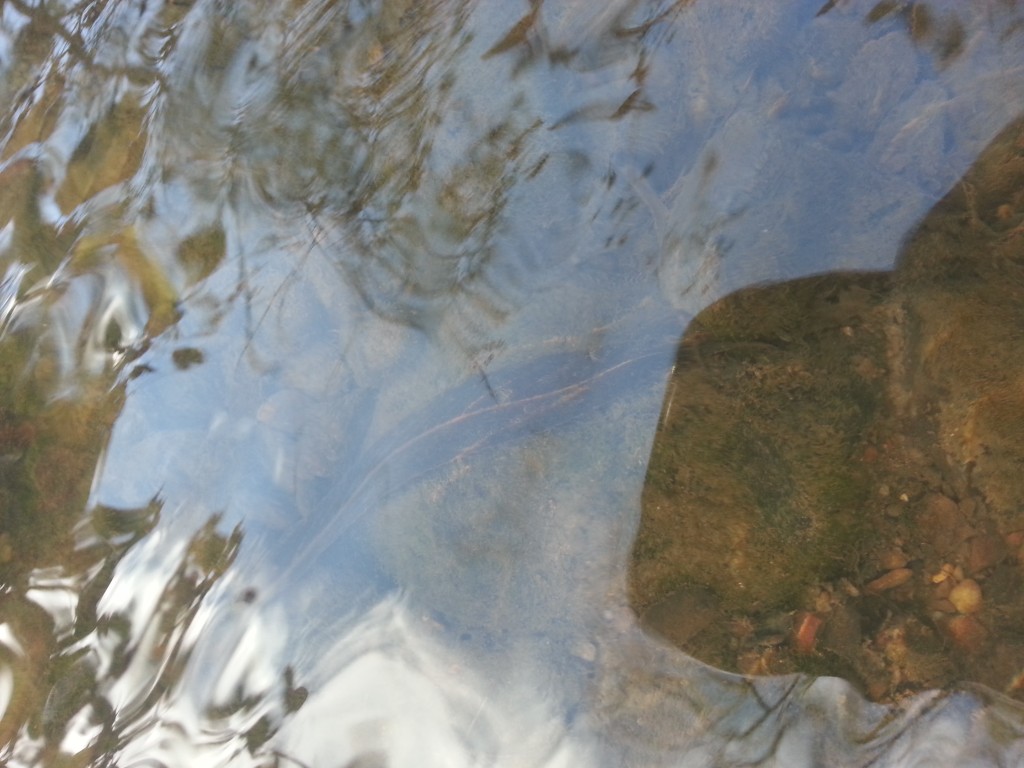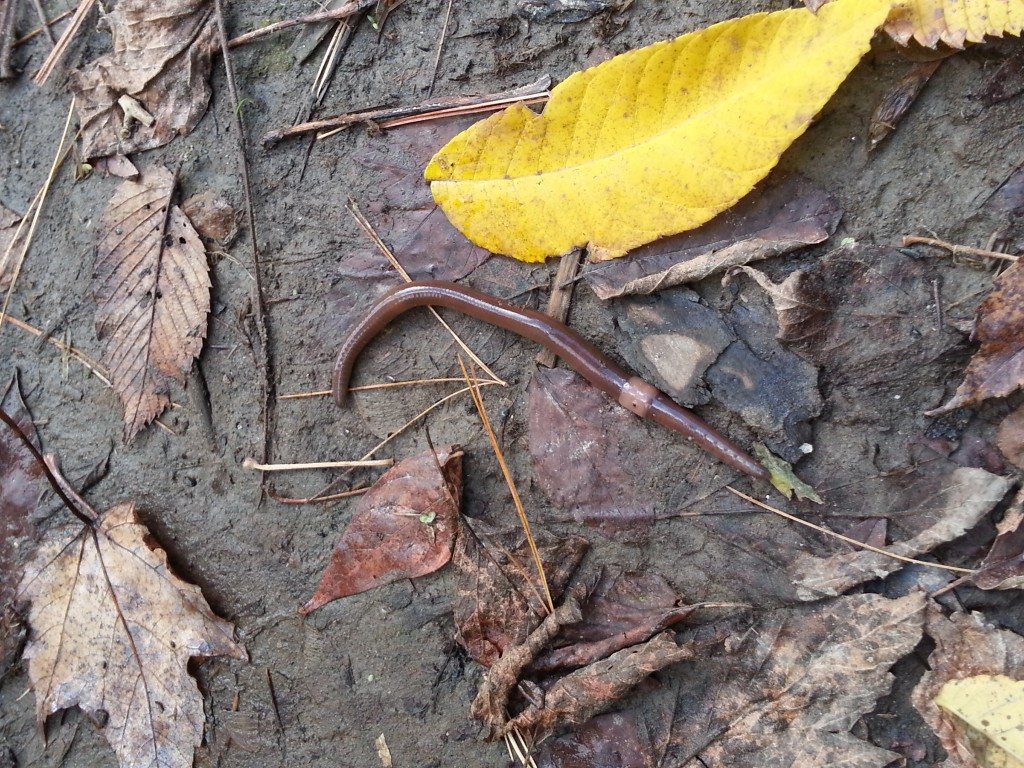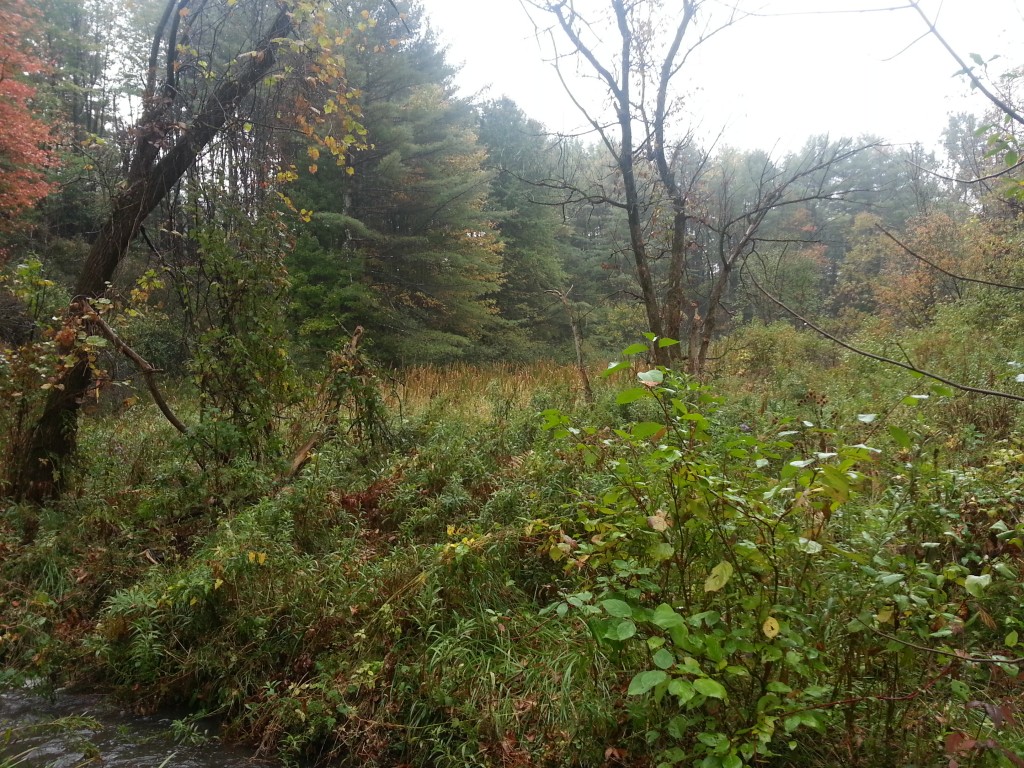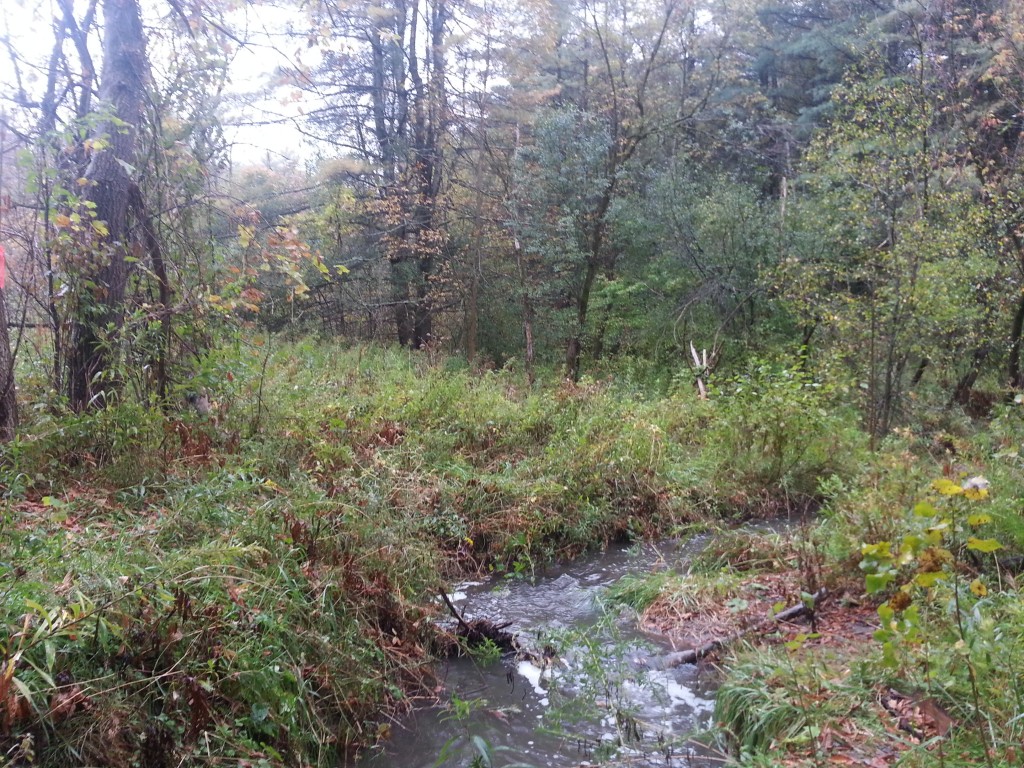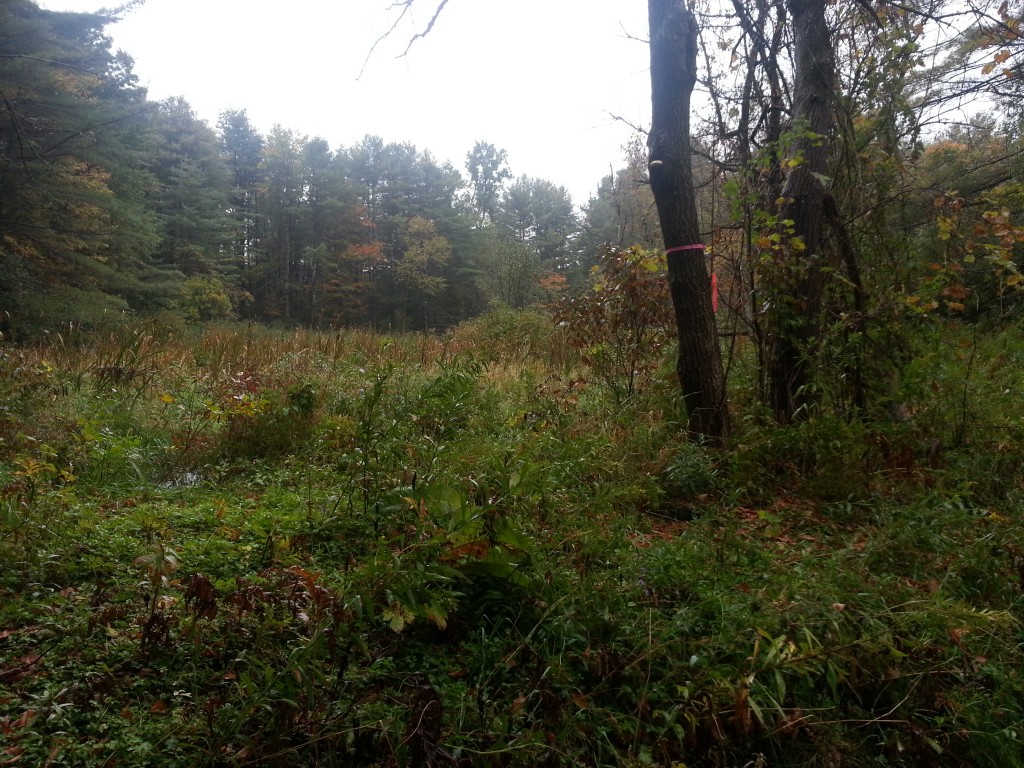Returning to Centennial Brook, I was pleased to find some noticeable changes within the ecosystem. The weather is clearly playing an influential role on the abiotic and biotic factors. The first thing to be noticed was how low the stream had become. Even after strong rains the days before, there simply has not been sufficient water flow to keep the stream high. It is obvious that the vegetation is undergoing some major transformations.
Even after strong rains the days before, there simply has not been sufficient water flow to keep the stream high. It is obvious that the vegetation is undergoing some major transformations.
Here you can see the baneberry mentioned in the introductory post becoming shriveled and translucent, with most fallen off.
As the Autumnal winds begin to blow, the flowers wither away and plants begin their release of seeds. As you can see in the photo to the right, the seeds are doing their job of clinging to animal “fur” quite well.
Herbaceous plants are dying away, and the deciduous trees’ leaves are changing their colors, with some even totally bare. Fall’s presence is obvious.
But as the weather changes, the local wildlife end up showing that they are still around as well.
As seen by the two photos above and the one below, there is still clearly wildlife in the vicinity of the stream.The top left photo shows a small burrow within Centennial Brook, most likely belonging to a crayfish; the top right displays a water-strider sitting near a leaf; and in the photo underneath, under all the shimmer of the water, one can see a single goose feather in the center.
Of course there is also an invasive presence: the very famous and charismatic European earthworm.
All in all, it goes without saying that change in the ecosystems around us is going on. Perhaps it could serve people well to put aside some time to spend outdoors, where impermanence and change are in a constant flux. This experience can very well ground some people to reality, and personally, I believe it gives a sense of equanimity.
All photos are by the author (Kevin Melman) unless specified otherwise
